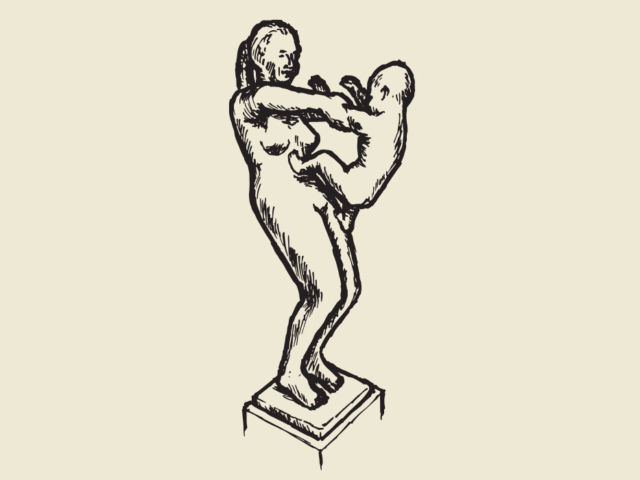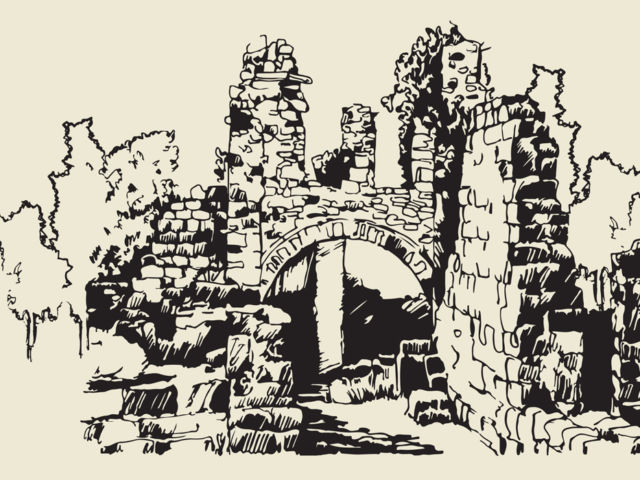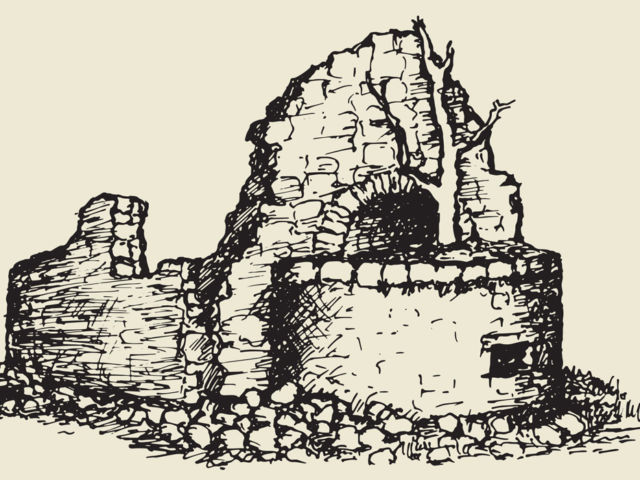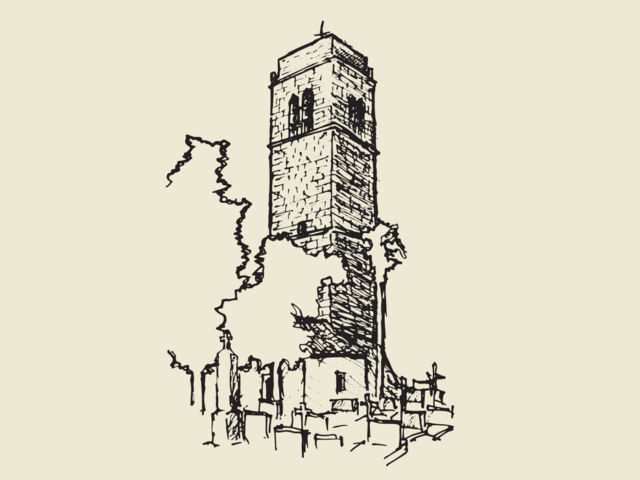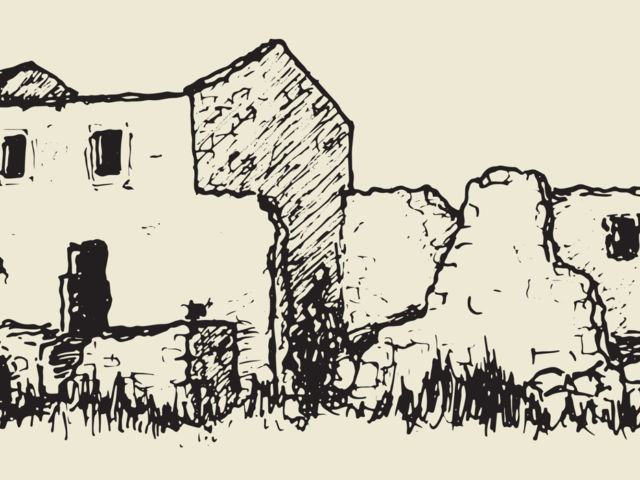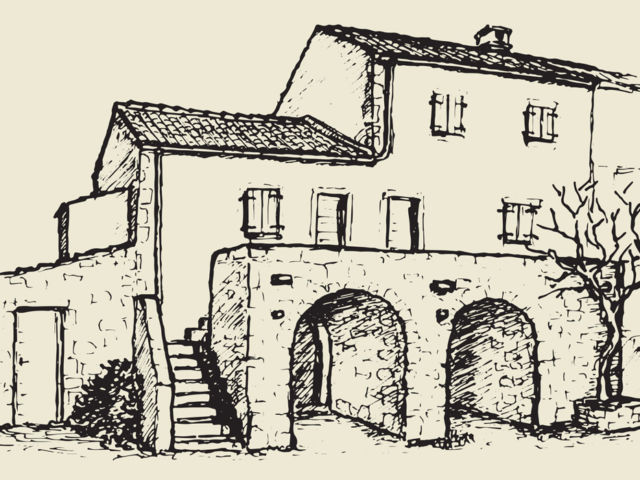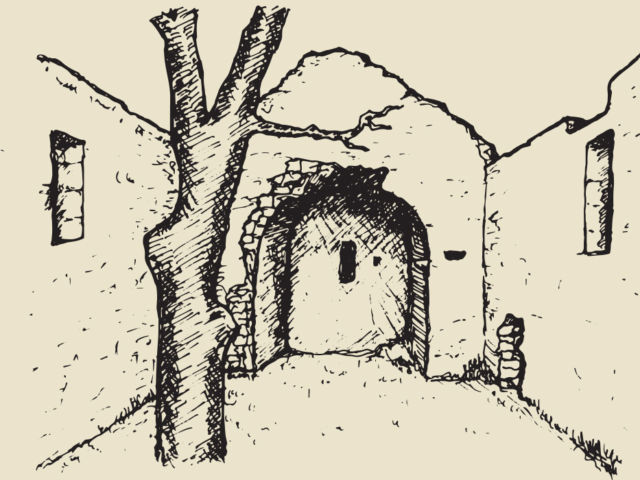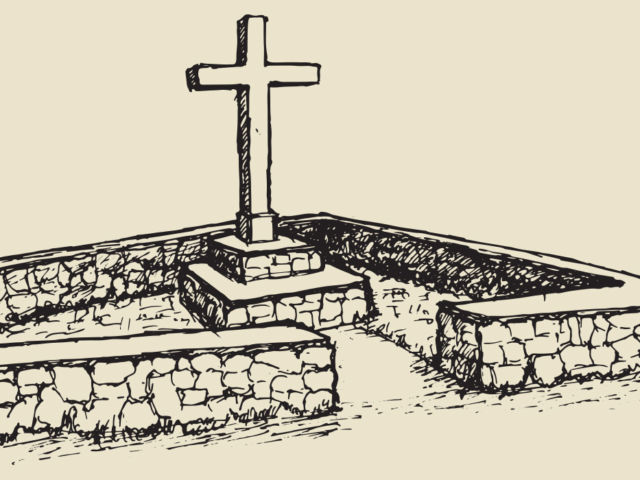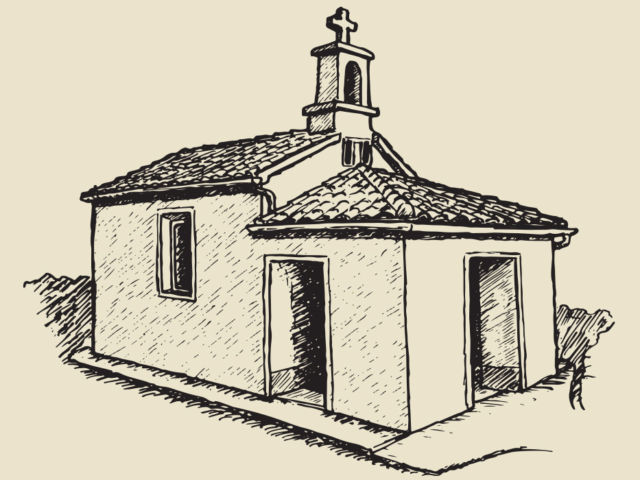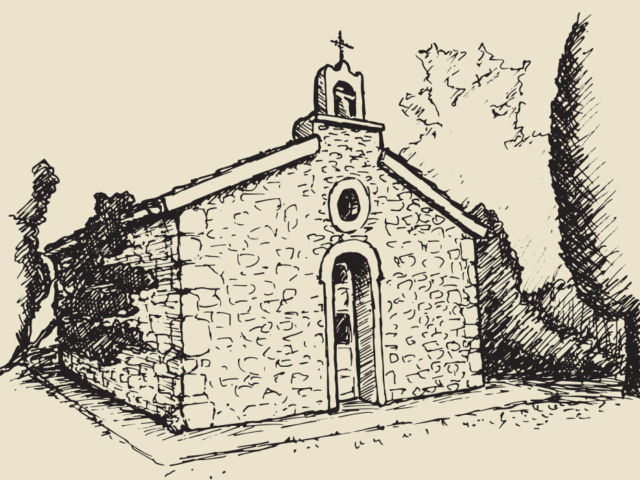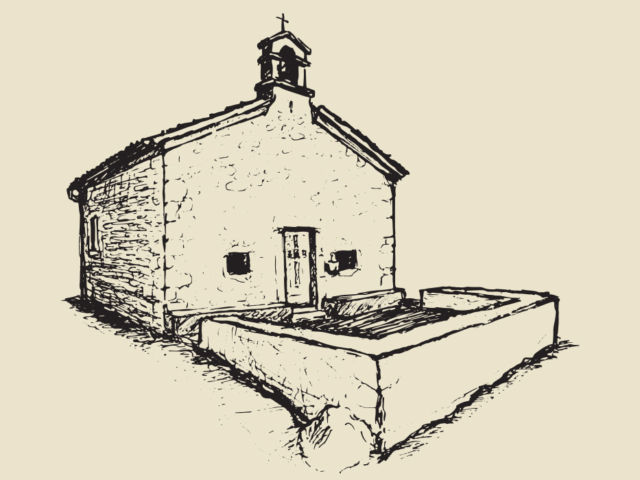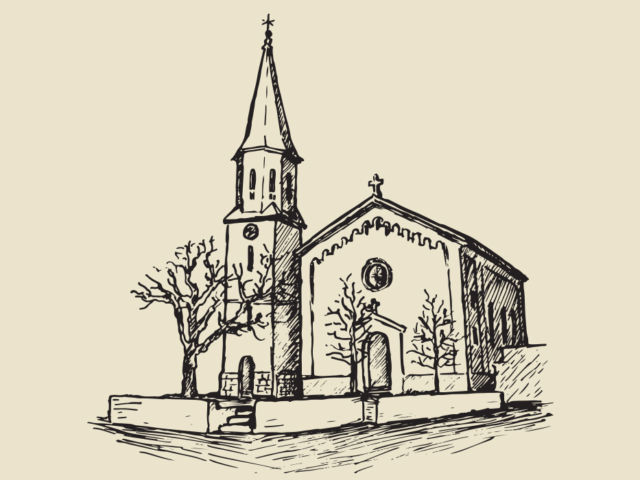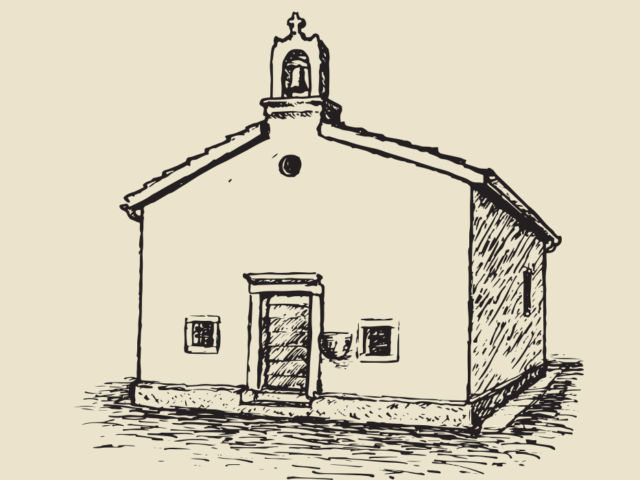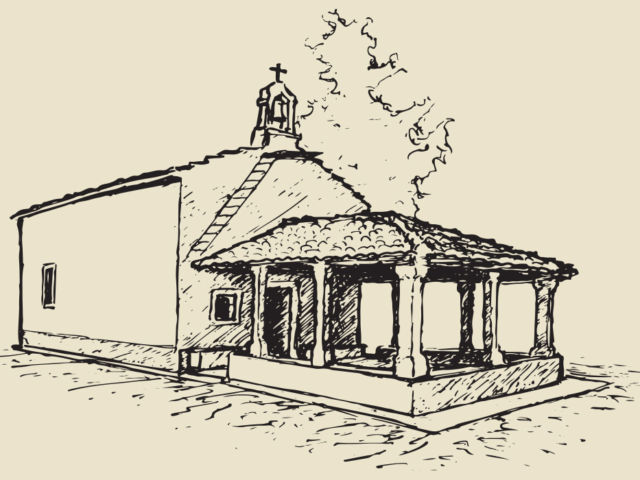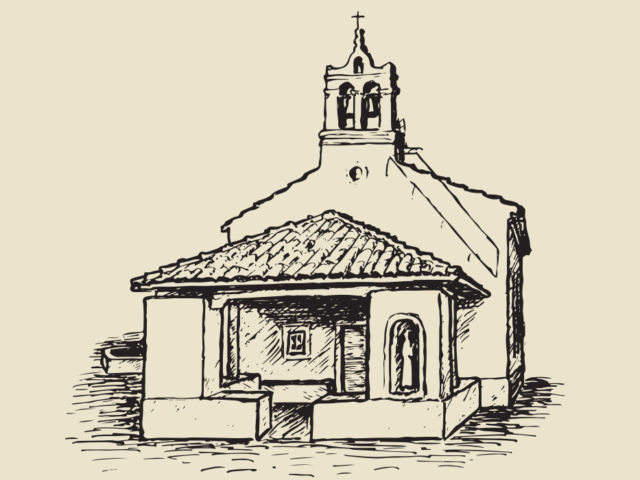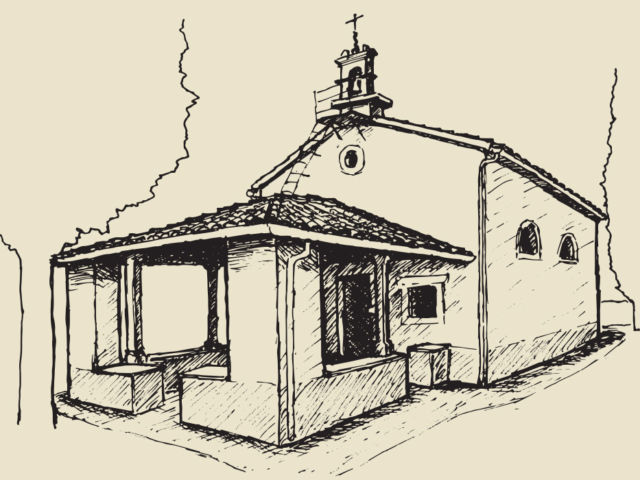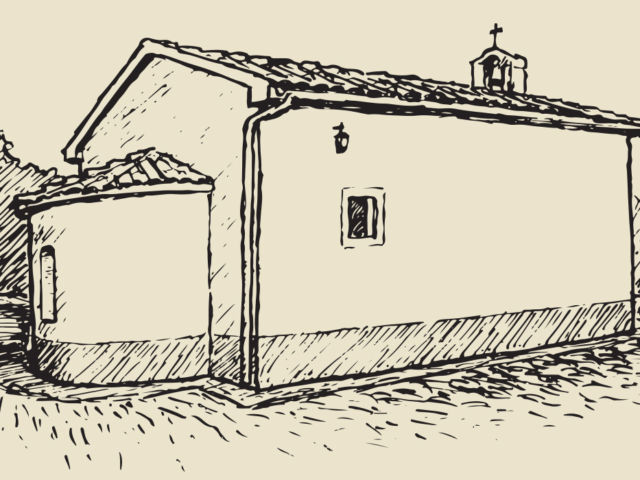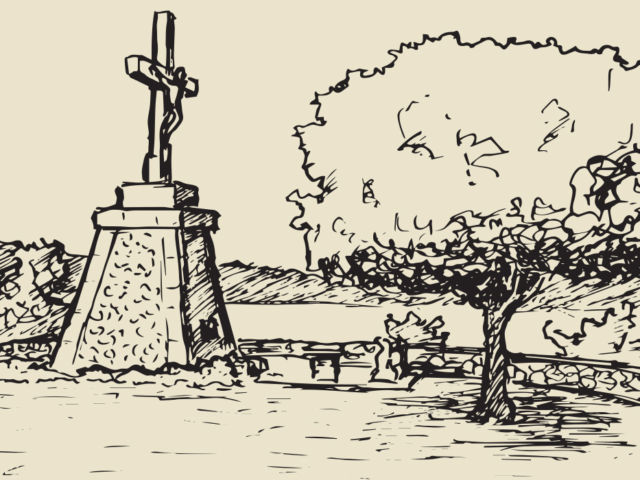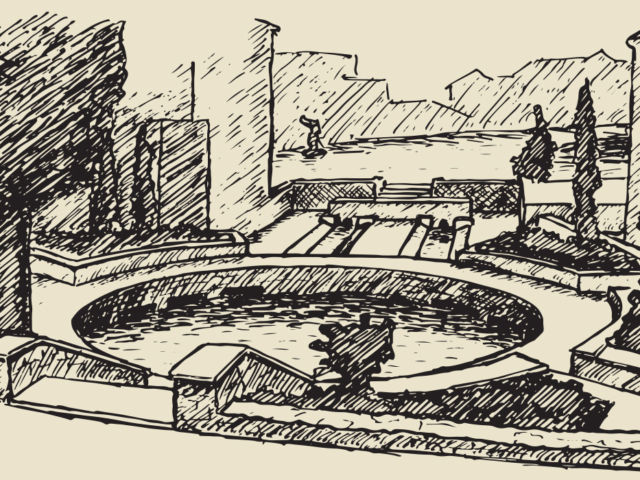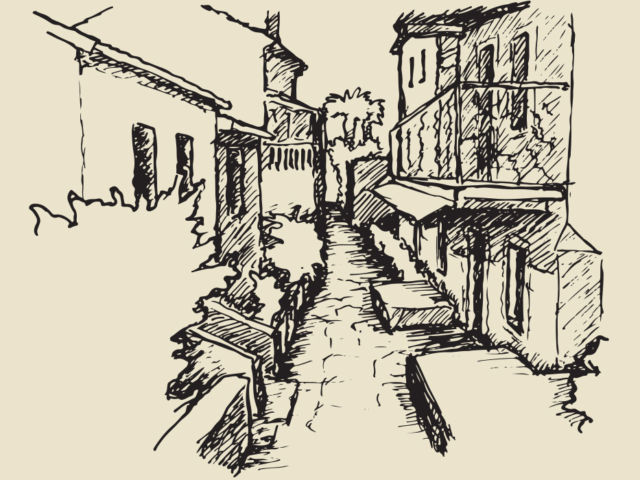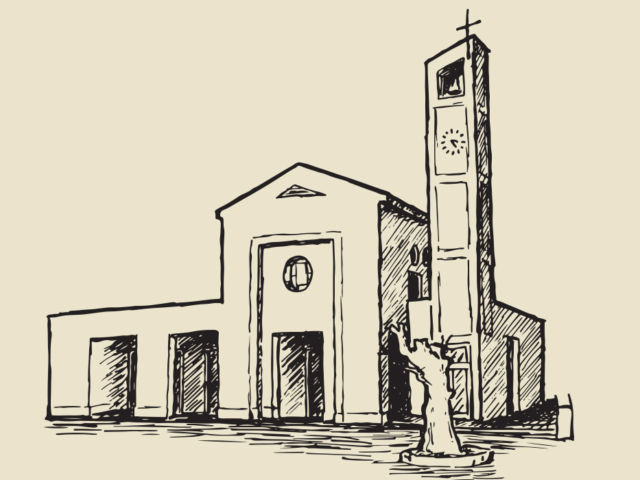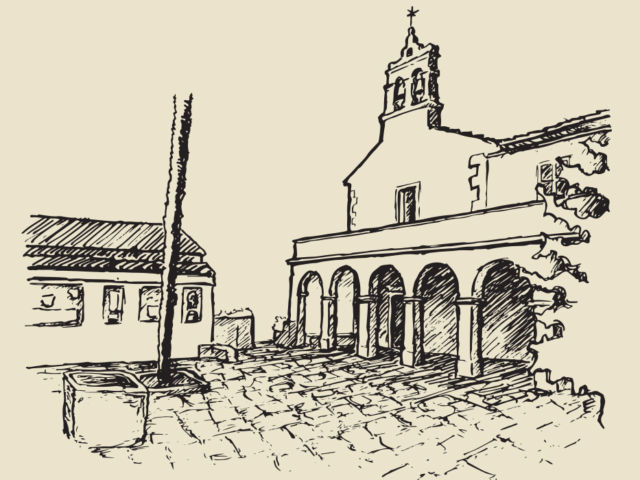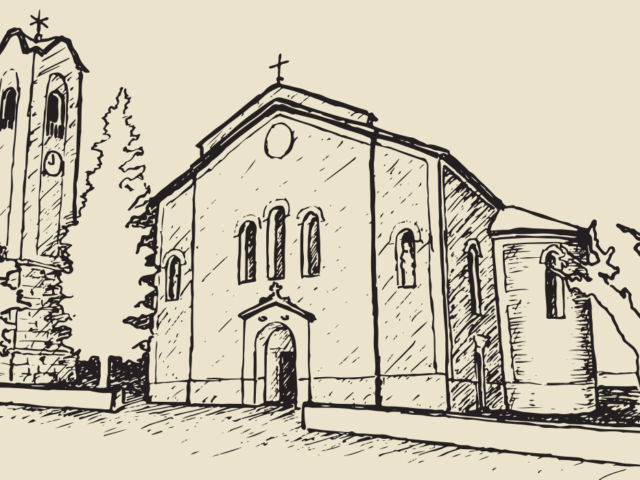The sculpture is the work of the sculptor Slavko Šoša (1923-1998). It was created in 1971 in the Sisak Ironworks art colony.
A place that had great traffic significance as a site of fairs and for the exchange of goods and products of the inhabitants of the island of Krk, as confirmed by the density of roads and gorges leading to it.
It is located west of the village of Sabljići, on the pasture Dolinji Drmun, a few kilometres from the village towards the old cemetery.
The site in the middle of the Dubašljansko Polje plain, the location of the original church of St. Apollinaire, patron saint of Dubašnica.
Along the main road, in the direction from Njivice before the intersection for Sv. Vid, there is a ruined and abandoned house that the inhabitants of this area built for their curate – priest.
This old rural house built in the mid-19th century and intended for two families attests to the modest way of life of the people in Dubašnica.
In 1955, in gratitude to God for his life, Jure Fabijanić erected a Gratitude Cross in his hometown.
The chapel is located in a forest, east of Oštrobradići village.
Chapel served as a parish church for the presently abandoned village.
This chapel dedicated to the old Christian martyrs, Vitus and Modestus, was first mentioned in 1451.
To escape malaria inhabitants left the original village of Miholjice and relocated to this site.
The permit for the construction of a chapel in Turčići, issued by a bishop and Venetian doge to the priest Josip Turčić, dates back to 1781.
This is the only church that was built in the Dubašnica area in the past hundred years.
Porat was home to the Chapel of St Mary Magdalene. Until repair works on the Church of St Apollinaris were completed, Ivan Frankopan granted the settlers permission to use the Chapel.
Though the parish church of St Apollinaris is located in the village of Bogovići, its history has roots in another place.


